However, the overall picture of preschool education still has many difficulties and challenges that require efforts and synchronous solutions.
Universal barriers
In recent times, Ho Chi Minh City has been gradually preparing conditions to achieve the best results in universalizing preschool education for 3-4 year old children, on which basis it can be deployed on a large scale. In terms of expertise and staff, this locality can ensure to meet the requirements. However, school facilities are still a matter of concern because of the constant overload.
Ms. Luong Thi Hong Diep - Head of the Preschool Education Department (Department of Education and Training of Ho Chi Minh City) informed: The city has additional mechanisms to improve the quality of preschool education. However, the expected target of preschools meeting national standards will be difficult for urban areas like Ho Chi Minh City due to the lack of land for school construction, especially preschools.
“It is difficult to ensure the mobilization rate of 3-4 year old children. For example, in suburban areas, although the school facilities always ensure teaching and learning for children of all ages, parents do not want to send their children to school because most of them have babysitters and their houses are far from school,” said Ms. Diep.
From the school's perspective, Ms. Nguyen Thi Hoang Bich Tham - Principal of Can Thanh Kindergarten (Can Gio, Ho Chi Minh City) commented: Early education for children from 3 to 5 years old plays a particularly important role in their comprehensive development. With access to early education, children have better conditions for physical, language, thinking and emotional development.
At Can Thanh Kindergarten, the teaching staff basically meets the requirements of professional qualifications. However, that does not mean that the school is free from difficulties. Specifically, children aged 3-4 often do not attend class fully, the facilities are degraded, and do not fully meet the requirements of teaching and caring for children. These difficulties have had and are having a significant impact on the quality of educational activities, while limiting the comprehensive development of children.
“The lack of equipment such as projectors and computers has a significant impact on the quality of education, making it difficult for children to access technology and modern teaching methods. STEM education activities at schools are only organized according to age, and teaching is mainly conducted using traditional methods, with limited use of technology.
Teachers mostly use pictures, photos, real objects or can show videos saved on the computer to present to students, instead of using technology directly in the classroom," said Ms. Tham.
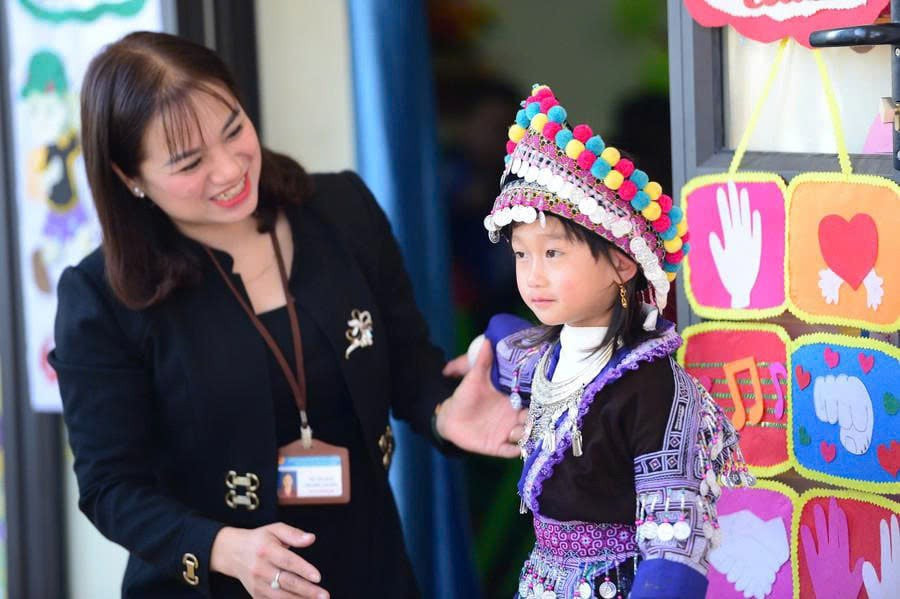
The mountainous province of Lai Chau still faces many difficulties, with over 80% of its population being ethnic minorities. The province has 113 preschools with over 1,500 groups and classes and nearly 36,500 children. The development of preschool education faces many obstacles as the rate of combined classes and separate locations remains high.
Lai Chau currently has 574 separate schools. The work of mobilizing children to attend classes has not met the requirements because some policies only stipulate that the beneficiaries are preschool children. On the other hand, the conditions of school facilities, classrooms, equipment, toys, and minimum teaching equipment in some mountainous and especially difficult communes have not met the quality requirements. The preschool teaching staff is lacking, not meeting the development needs, and even the teacher/class ratio in some areas is low.
Mr. Vu Tien Hoa - Deputy Director of Lai Chau Department of Education and Training said: "Despite the challenges, we have actively directed and focused on implementing many innovative solutions to improve the quality of preschool education, especially in disadvantaged areas and ethnic minorities. In addition, the education sector focuses on developing preschool education programs based on the application of advanced teaching methods and creative models to ensure suitability to the local context".
Lai Chau is also investing in and building infrastructure for kindergartens based on urgent needs. Priority is given to schools and classrooms that are in disrepair and potentially unsafe; schools that are on the construction roadmap and proposed for national standard recognition...
The quality of preschool teachers has been gradually standardized. As of May 31, the province had a total of 3,070 preschool managers and teachers. The percentage of teachers with college degrees or higher reached 96.9%.
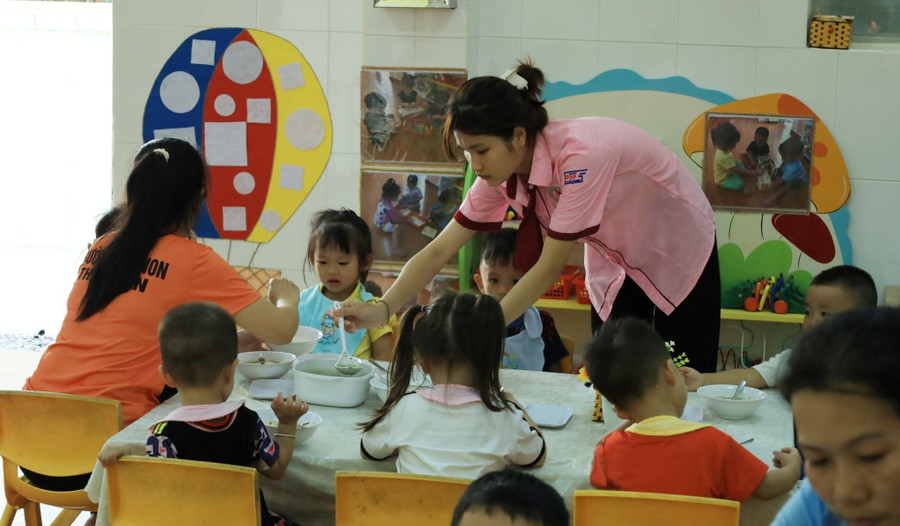
The problem of fairness
In Dak Lak, in the 2024-2025 school year, universal preschool education for 5-year-old children continued to maintain its achievements with a class attendance rate of 99.66%, completing 100% of the universalization target at the commune and ward levels. However, the problem of expanding universalization for 3-4 year-old children still faces many challenges when nearly 20% of children do not have access to preschool education services, especially in remote areas and ethnic minorities.
According to statistics from the Dak Lak Department of Education and Training, in the 2024-2025 school year, the whole province has 37,455/37,581 5-year-old children mobilized to attend classes. Previously, in the 2023-2024 school year, the number of children completing the preschool education program was 37,918, reaching 100%. Currently, Dak Lak has 1,398 5-year-old kindergarten classes, with 2,698 teachers, reaching an average of 1.93 teachers/class, ensuring the prescribed standards. In particular, 100% of teachers directly teaching 5-year-old classes meet professional standards according to Circular No. 26/2020/TT-BGDDT of the Ministry of Education and Training.
In terms of facilities, all 5-year-old classes have their own classrooms, solid or semi-solid, with adequate lighting, standard area, drainage system, separate toilets, and equipment and toys in accordance with regulations. “With such a foundation, it can be affirmed that universalizing 5-year-old preschool education in Dak Lak has entered a stage of sustainable and even development among localities in the province,” said Ms. Le Thi Kim Oanh - Deputy Director of the Department of Education and Training of Dak Lak.
Although the attendance rate of 5-year-old children is high, for the 3-4 year-old group, in the 2024-2025 school year, the whole province mobilized about 80% of children to attend class. At the same time, the attendance rate of preschool children (0-3 years old) is more modest, reaching only 17.3% out of a total of more than 47,000 children. According to the report, many remote schools still have to borrow classrooms, lack teachers, or do not have the conditions to open independent nursery groups.
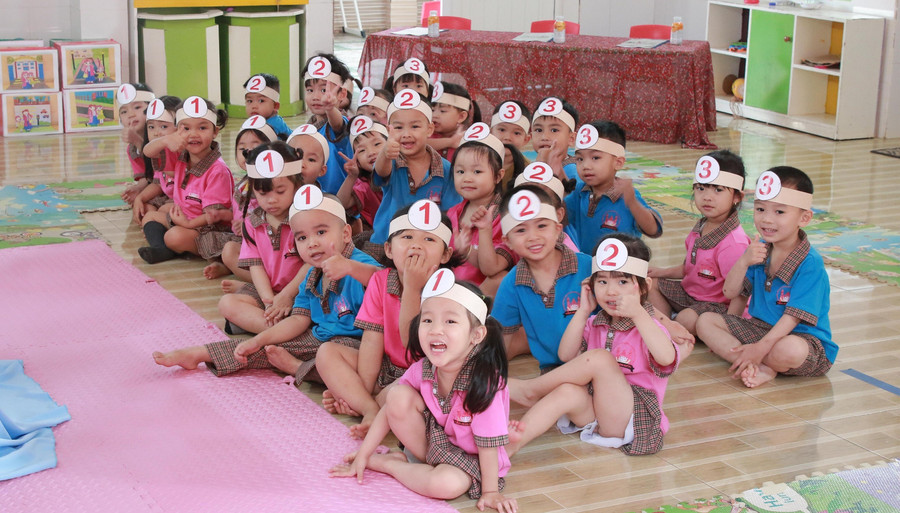
“In central communes and wards, thanks to the promotion of socialization, the rate of mobilizing 3-4 year old children is high, in some places almost absolute. However, in ethnic minority areas, due to difficult roads and low income, many families still keep their children at home or send them to other localities seasonally. This is a big challenge if we want to expand universalization to the entire 3-5 year old group in the coming period,” Ms. Le Thi Kim Oanh stated.
Since 2025, Resolution No. 218/2025/QH15 of the National Assembly has set a goal: By 2030, the whole country will achieve universal preschool education standards for children aged 3-5. This is a pressure, but also an opportunity for localities like Dak Lak to adjust their education strategies from the root.
According to the Dak Lak Department of Education and Training, to complete the goal, it is necessary to deploy the following groups of solutions: Increase preschool teachers in disadvantaged areas, overcome the shortage of staff; improve facilities, especially nursery classes, build solid classrooms, supplement essential learning materials; strengthen support policies for parents, especially poor and near-poor households, ethnic minorities; strongly develop the network of non-public classes in urban areas to reduce the burden on public schools, focus resources on investment in disadvantaged areas; propagate to raise community awareness, use ethnic minority languages to effectively mobilize in villages.
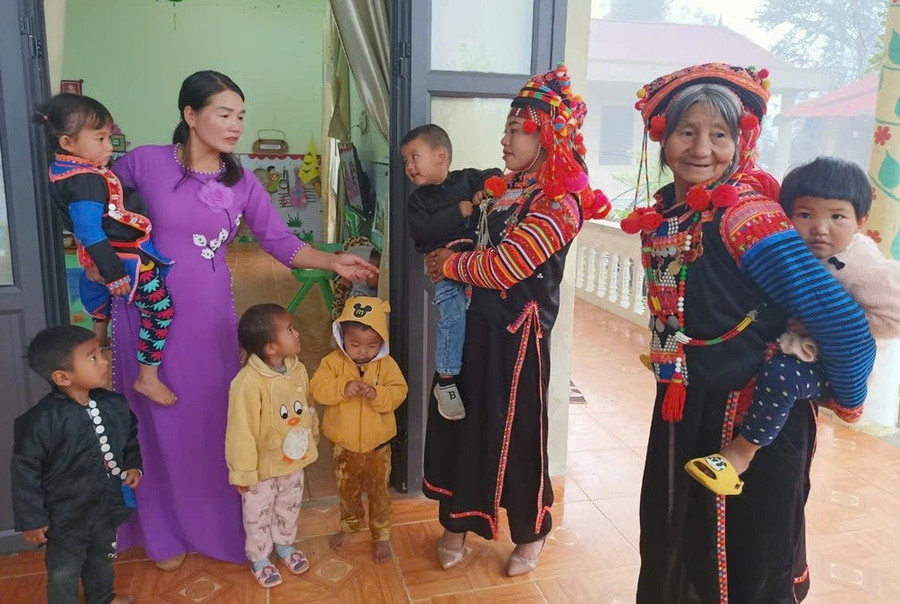
Bright spots in difficult areas
Despite difficulties in facilities, teaching staff and parental psychology, preschool education in many localities still strives to find creative ways to bring children to school. In this context, the success stories of some preschools in difficult areas are clear evidence that determination and effective solutions have brought positive results.
From 2021 to now, the universal education work for 3-5 year old children of Kim Noi Kindergarten (Luc Yen, Lao Cai) has always reached 100%. Ms. Do Thi Loan - Vice Principal of the school said: "Because many villages are quite far from the main school, it is difficult for preschool children to go to school at the right age. However, since 2021, the school has 3 more campuses with spacious facilities, so the work of mobilizing 3-5 year old children to go to school is complete.
At the same time, national target programs have created conditions to improve facilities, schools, and convenient roads, so the movement of children to go to school has progressed significantly. In the 2024-2025 school year alone, it only reached 99% because a three-year-old child with a mobility disability could not go to school at the right age.
At Khanh Thuong B Kindergarten (Ba Vi, Hanoi), Ms. Nguyen Thi Phuong Loan - Principal of the school said:
“To effectively popularize preschool education for children aged 3-5, we focus all human resources on propaganda and mobilization. Before each school year, the school reviews the list of children, grasps the situation, coordinates effectively with the youth union, women's union, village chief, and through the Zalo group helps parents update the situation and send children to school at the right age.
On the other hand, review school facilities, train management staff, teachers, and support staff for disadvantaged families so that children can go to school at the right age.
In Lai Chau, the socialization of education has been promoted, contributing to improving the quality of preschool education. From 2018 to present, Lai Chau has mobilized foreign non-governmental organizations to support the preschool education sector with nearly 15 billion VND, focusing on building schools, providing teaching equipment, and supporting training to improve teaching and learning capacity.
Thanks to that, the rate of mobilizing children to attend classes has increased gradually each year. In the 2024-2025 school year, the rate of mobilizing children in nursery schools reached 33.8%; preschool children reached 99.8%; and 5-year-old children alone reached 99.98%. The quality of care, health and nutrition for preschool children is focused on, contributing to physical development, towards comprehensive development for children.
At the Conference to review the Project “Developing Preschool Education for the period 2018 - 2025”, Mr. Tong Thanh Hai - Vice Chairman of Lai Chau Provincial People's Committee requested a thorough review of schools, facilities and staff after dissolving districts and merging communes. In particular, it is necessary to accurately forecast changes in the number of students in the coming time to develop a plan for the network of schools, facilities and staff in accordance with actual needs.
At the same time, it is necessary to maintain the results of universalizing preschool education for 5-year-old children. The Vice Chairman of Lai Chau Provincial People's Committee directed to promote the inspection of school education quality, in conjunction with the construction of national standard preschools. In particular, the province will prioritize the consolidation of classrooms and ensure that 100% of schools and school sites have sanitary facilities and clean water.
In addition to the State policies for preschool children such as free tuition, subsidized meals, etc., Kim Noi Kindergarten also calls on organizations to provide additional support for children to help make their meals more complete, so parents can feel secure when sending their children to school. At the same time, the awareness of families is increasingly improving, so sending children to school at the right age is more concerned and closely monitored. - Ms. Do Thi Loan - Vice Principal of Kim Noi Kindergarten
Source: https://giaoducthoidai.vn/pho-cap-giao-duc-mam-non-cho-tre-3-5-tuoi-nhan-dien-thach-thuc-post741545.html


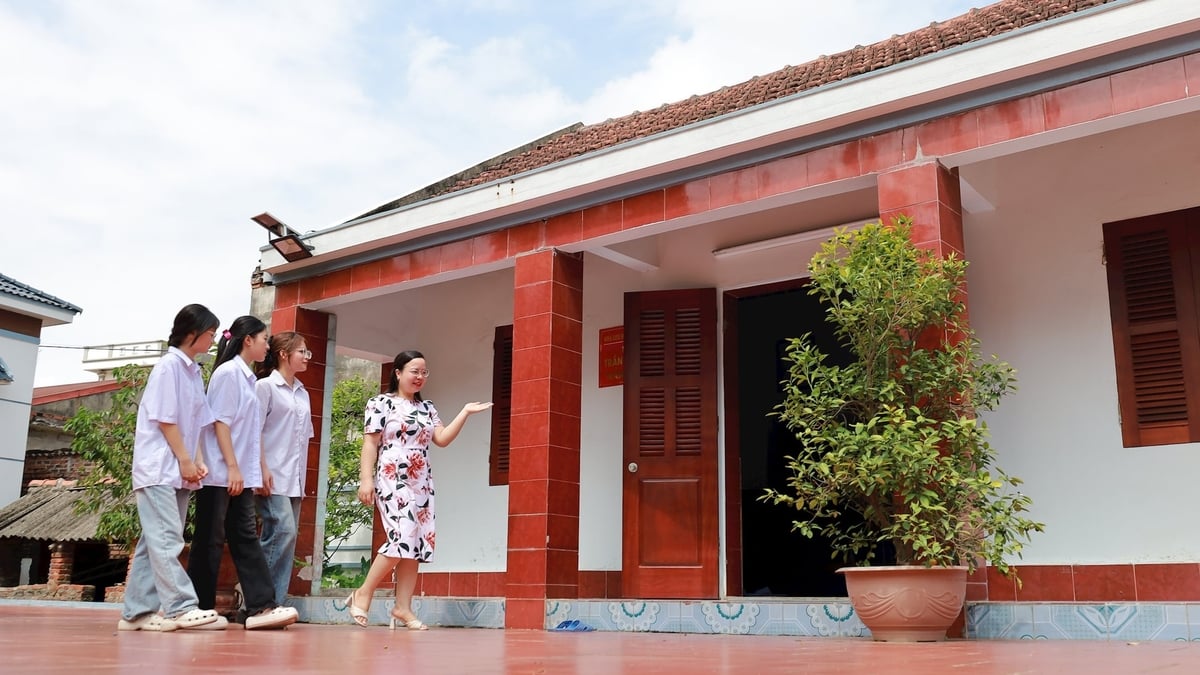



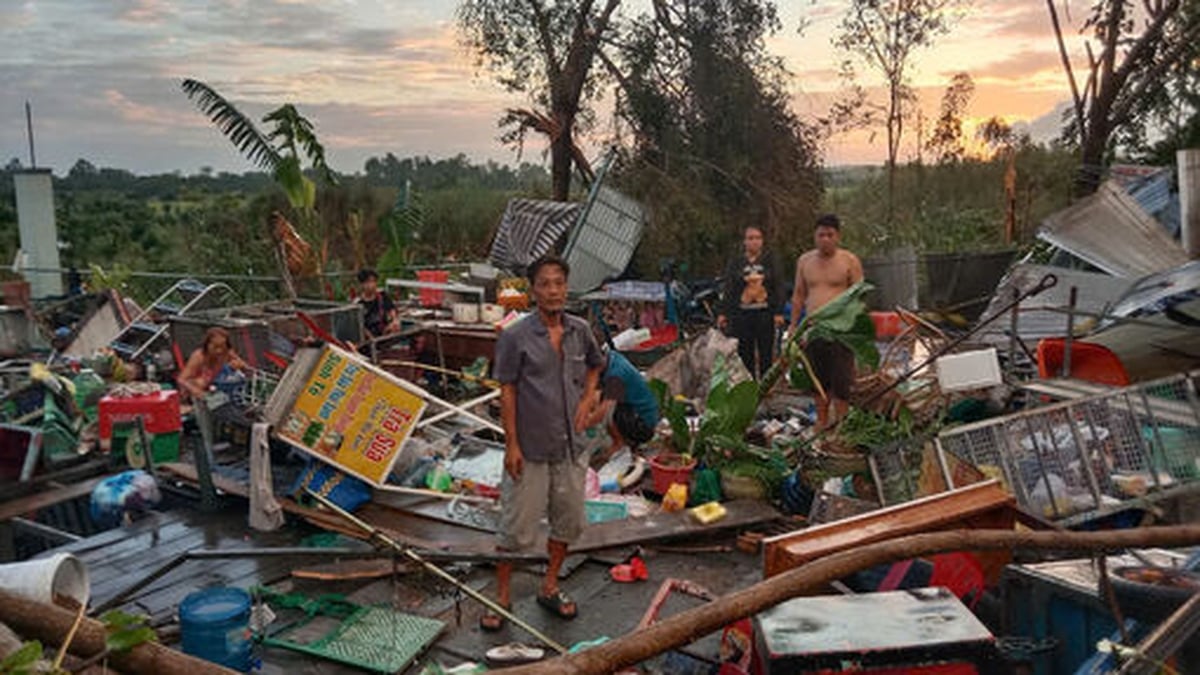




























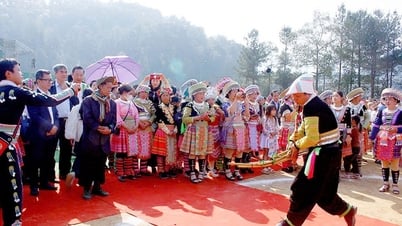



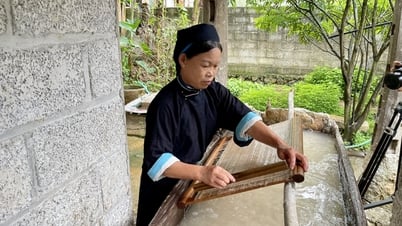



























![[Photo] National Assembly Chairman Tran Thanh Man receives Chairman of Morocco-Vietnam Friendship Association](https://vphoto.vietnam.vn/thumb/402x226/vietnam/resource/IMAGE/2025/7/26/b5fb486562044db9a5e95efb6dc6a263)



































Comment (0)